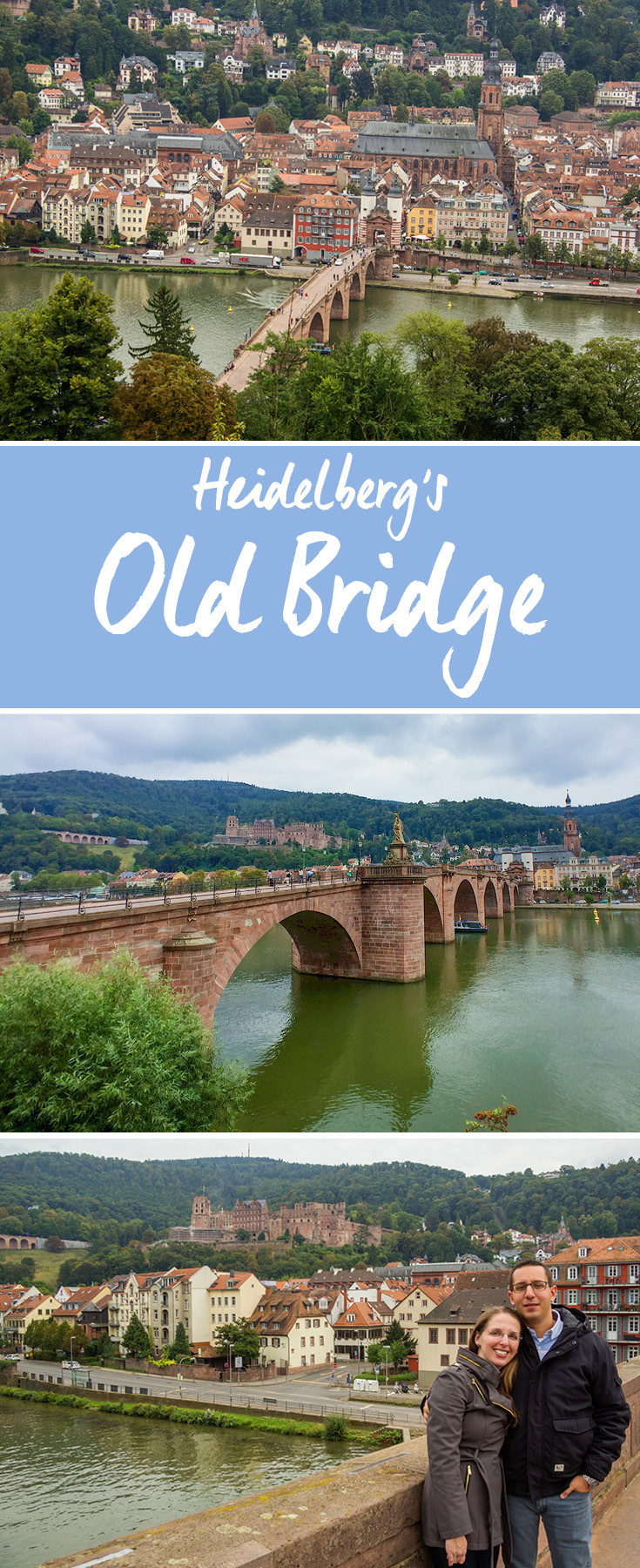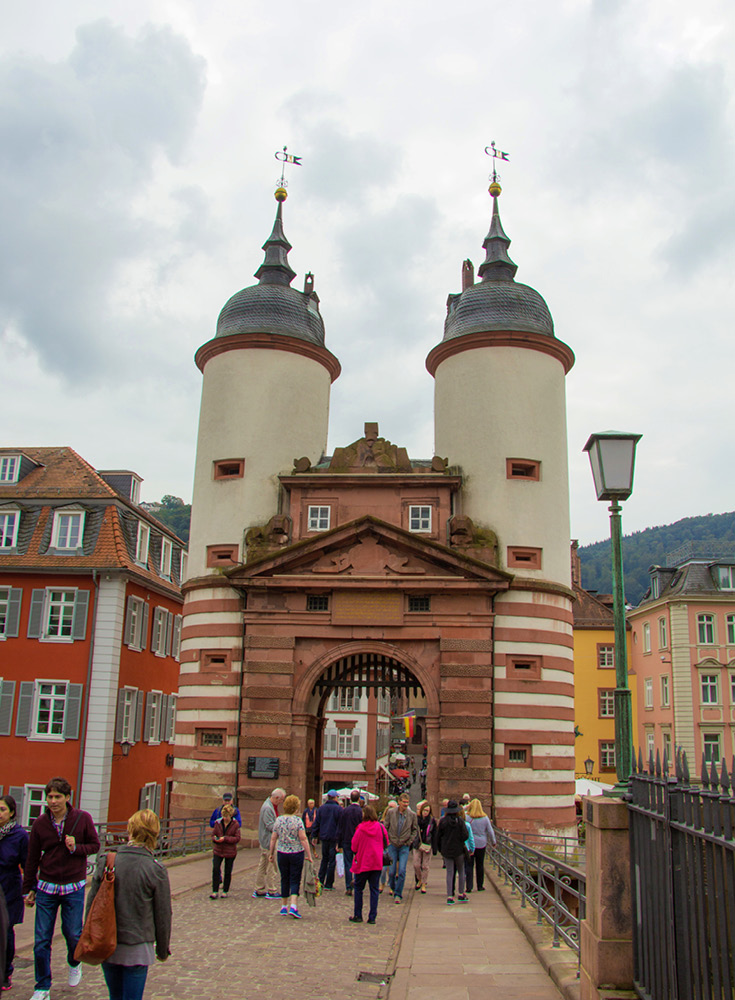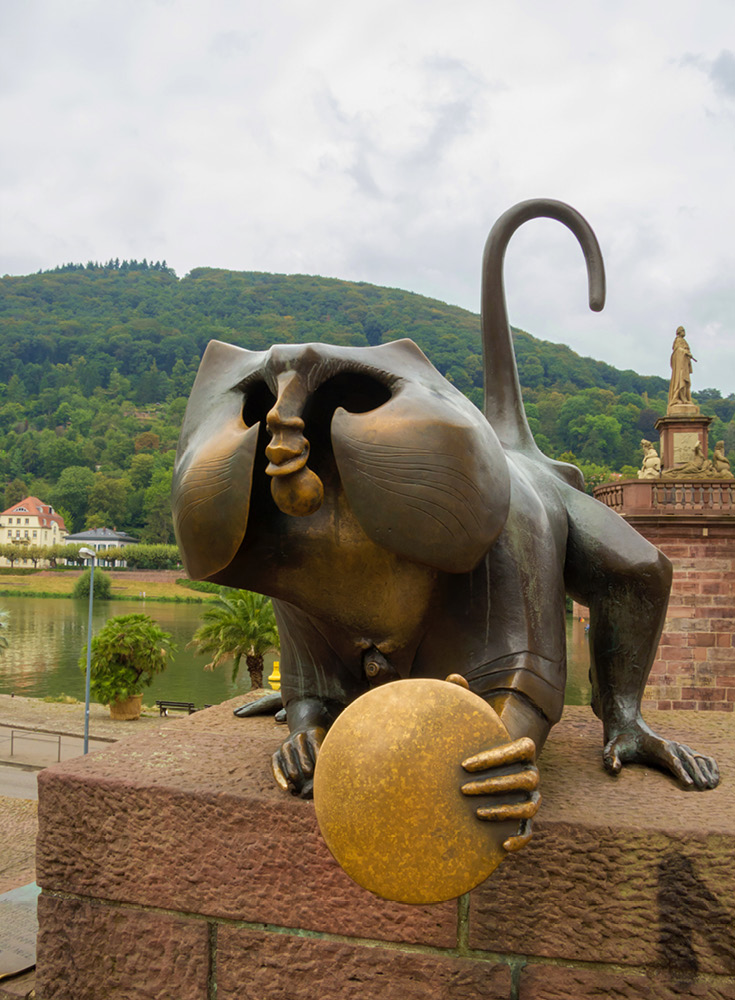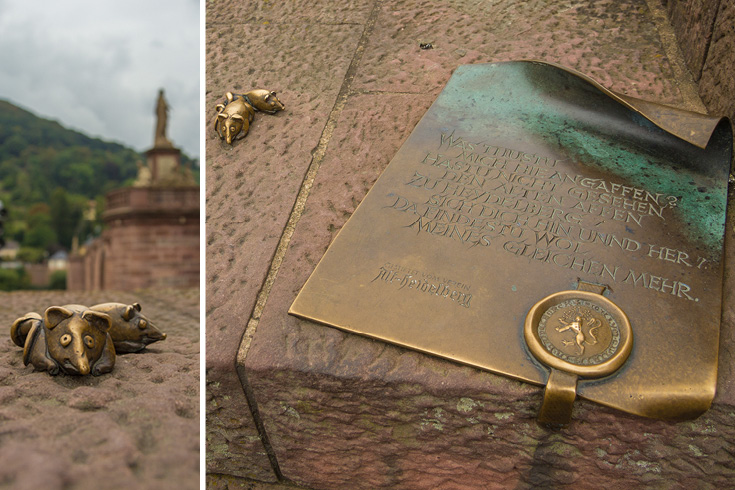Disclosure: Please note that some links are affiliate links, and at no additional cost to you, we earn a commission if you make a purchase.
If you would like to support this website in some way, using these links will help do exactly that.

The Old Bridge, officially called Karl-Theodor Bridge, was built from 1786 to 1788 under Prince Karl Theodor, after eight wooden predecessors were destroyed by flooding and wars. It provides a great 360 degree spot for pictures of Heidelberg’s skyline complete with church spires, the castle, and riverfront homes.

Under Attack and Sabotage
If you look in the history books of Heidelberg, the Old Bridge is often mentioned as a place of warfare. The towers served as prisons and as the bridge guards’ domicile in earlier centuries. During the Coalition Wars (1792-1815) the French troops occupied half of the Palatinate up to the river Rhine, and attempted to conquer the Old Bridge, but did not succeed. The bridge you see today was rebuilt after WWII in 1947, when it was partly destroyed for the sake of a strategy. The German military blew up the fifth and sixth bridge pillars to prevent the entry of the American troops into Heidelberg. This approach to “secure” Heidelberg proved useless, the Allied Forces still made it over the bridge. From the 1970’s on, the bridge was modernized and adapted to serve a more modern infrastructure. Today the bridge can be driven on by vehicles between 6am to 10pm, so watch out for cars when you take selfies or watch boats float by. After 10pm, it serves as a pedestrian zone only until the next morning.


Can’t Miss the Philosophical Monkey
One piece not to miss within all the beautiful surroundings is the bronze monkey. A monkey figure as a city monument has already been mentioned in a poem by German author Martin Zeiller in 1632, which is still written next to the new sculpture (see below for the text). The old monkey figure of the 17th century was destroyed in 1689 and a new monkey was not created until 1979, when artist Prof. Gernot Rumpf re-created it. The new bridge monkey, like the original, holds a mirror in his hand. Everyone that looks or takes a picture of the monkey will see their own face in the mirror. Next to the monkey is a bronze plaque with the following inscription:
WAS THUSTU
MICH HIE ANGAFFEN
HASTU NICHT GESEHEN
DEN ALTEN AFFEN
ZU HEYDELBERG
SICH DICH HIN UNND HER
DA FINDESTU WOL
MEINES GLEICHEN MEHR
This translates to: Look around you or in the mirror, and you will see more specimens of this species. Basically the monkey is telling us not to take ourselves so seriously.

By the way: Beside the plaque you can see 2 mice, which is the creative “signature” of Prof. Gernot Rumpf, who has created the monkey sculpture and many more sculptures and fountains all over Germany. You can see more of his work here.
Follow Along
If you enjoyed this article, or these topics sound interesting to you, you'll love our weekly newsletter. You'll receive the newest posts each week and exclusive access to free planning resources like ‘Packing List & Tips for 2 Weeks in Germany’ and ‘Everything You Need to Rent a Car in Germany’.
Thank you for reading!

